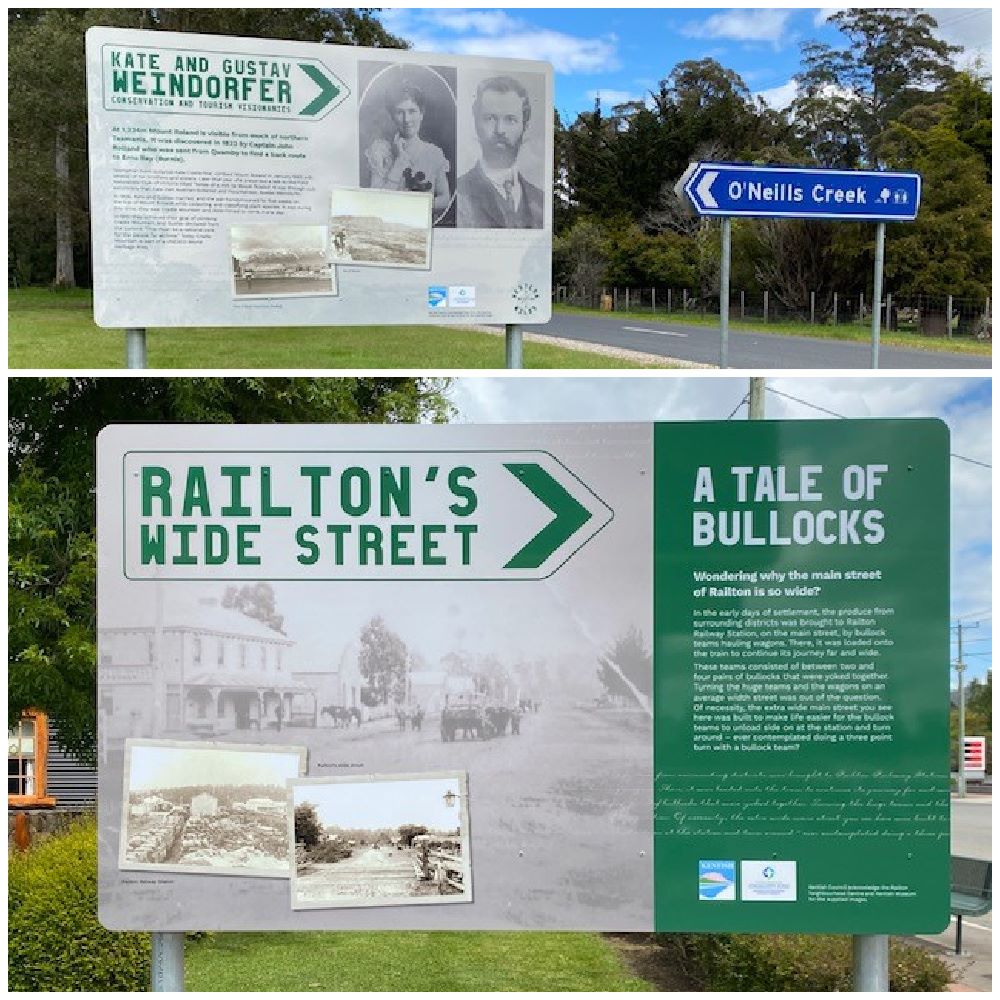Story Stops for the western Wilds Drive

Kentish Council has taken the opportunity to position its townships as the gateway to the Western Wilds Drive Journey, to compliment Tourism Tasmania’s state-wide drive journey.
Council successfully applied for funding from the Tasmanian Community Fund (TCF) to assist with completing the project with Kentish Mayor Tim Wilson officially launching the Story Stops in April.
Story Stops comprises seven signs installed in various locations around the municipality to encourage visitors to slow down, discover the ‘hero’ stories of each township and then explore the area further for themselves.
The four story stops signs located in Wilmot include Bob Quaile – Cradle Mountain Transport Pioneer, Wilmot - More than Butter and Potatoes, Wilmot - Residents at Play and the Middlesex Post Office Tree.
They all tell the tales of what early life was like in Wilmot and encourage further exploration of Wilmot itself, Forth Falls, the surrounding districts and the Post Office Tree en-route to Cradle Mountain.
Kentish Council engaged graphic designer Anita Pava from Stream Art Design to bring the stories to life and local sign writing company Intercity Signs from East Devonport manufactured and installed the signs.
The remaining three signs are located at Railton (Lions Park), O’Neill’s Creek, Gowrie Park and Round Mountain Lookout and tell the stories of Railton’s Wide Street – A Tale of Bullocks, Kate and Gustav Weindorfer – Conservation and Tourism Visionaries and their honeymoon spent on Mount Roland and the Mersey Forth Hydro Scheme respectively.
Chief executive of West by North West Regional Tourism, Tom Wootton, described the story stops as an important component of the region’s visitor experience.
“We know that visitors to Tasmania are seeking cultural immersion, more so than other destinations. So, by allowing our self-drive tourists to stop, rest and learn about the history of the area through engaging stories, it just adds another layer to their journey.”
“It’s one thing for visitors to appreciate Wilmot for its visual character, but by learning stories of the town’s rich agricultural roots or Bob Quaile’s tourism transport operation in the early 1900s, suddenly the visitor can completely re-lens their entire perception of the town, the landscape and the broader area.”
TCF Chair Sally Darke congratulated the Kentish Council on creating an experience that will add value to the tourism experience for visitors and create a sense of pride in the local community.
“This is a terrific opportunity for visitors and locals to get out and experience the history of the area while exploring the region.